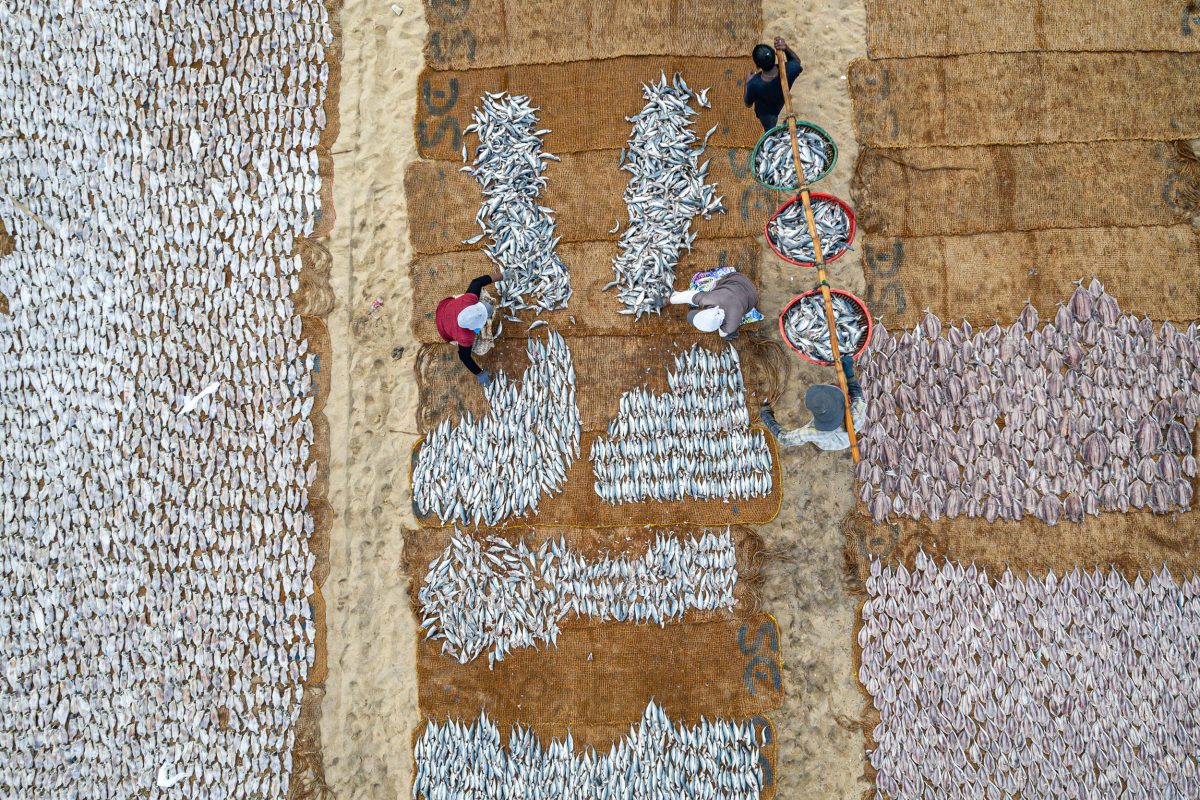One Great Shot: Dried Fish and a Drone’s-Eye View
A photojournalist visiting a Sri Lankan fish market captures a traditional fish-drying process from above.
Article body copy
The city of Negombo, on the west coast of Sri Lanka, boasts a rich, centuries-long maritime history. Negombo has transitioned from a quaint fishing town to a bustling beach destination but remains deeply connected to its roots.
On Negombo’s south end sits an expansive fish market—an economic hub that usually hums to life around 6:00 a.m., when fishermen return with the day’s catch. Wandering through the market one day in January 2024 was a captivating experience for my eyes and nose—the pungent smell of dried fish wafted between the stalls. Standing among crowds of crows and fishmongers, I launched my drone to get a bird’s-eye view of the meticulous fish-drying process taking place nearby, so removed from the chaos of chopping and haggling inside the market.
Once my drone was in the air, I spotted the fishermen who’d spent the morning fishing with a traditional netting technique known as kattudel and had gathered near the market. They were preparing to dry their catch—an uncountable array of mackerel, sprats, and sardines.
Drying fish is common in many coastal communities, as it facilitates preservation and trade. First, fishermen immerse their fish in large brine tanks, then they slice them in half. Next, workers arrange the semiprocessed specimens on drying mats made from native millet. Sun-dried fish can last for weeks and, because many residents don’t own refrigerators, is a staple in the local cuisine, adding a unique flavor to Sri Lankan dishes.

